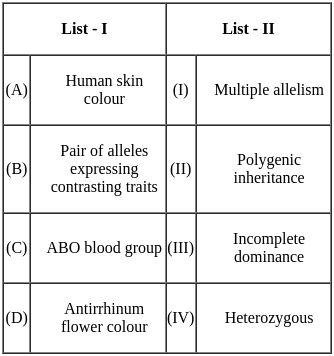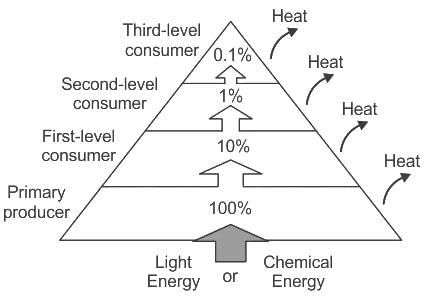Biology: CUET Mock Test - 3 - CUET MCQ
30 Questions MCQ Test CUET Mock Test Series - Biology: CUET Mock Test - 3
The population of vagina with semen during coitus is called as _______
Match List - I with List - II.

Choose the correct answer from the options given below:

The sequence of nitrogen bases of the template strand of DNA in a transcription unit is 3'-ATTGAACTG-5'. The sequence of nitrogen bases in its mRNA transcript would be:
Identify the regions of the transcription unit.
(A) Promoter
(B) Sigma factor
(C) Terminator
(D) The structural gene
Choose the correct answer from the options given below:
Crossing over and Linkage are an exception to Mendelian Law of:
Which organ is the first to form in the developing human fetus, formed after just 1 month of pregnancy?
What is the phenotypic ratio of F2 generation in a dihybrid cross?
What is the correct order of travel of sperm through the female reproductive tract before it reaches the egg?
In Mendel’s experiments on garden pea plants, he performed a dihybrid cross of round yellow and green wrinkled seed plants. In the F2 generation, he sampled 1600 plants. Which of the following represents the correct number of plants of each phenotype?
What is the pair of homologous chromosomes that line together during the meiosis I called?
Which law was proposed by Mendel based on his dihybrid cross studies?
Who interpreted by observing the independent segregation of chromosomes during meiosis, that the factors they carry would also separate independently?
What part of the oviduct does the sperm encounter the egg?
Which of these is not an associated function of the increased maternal hormones estrogen, progesterone, prolactin, and cortisol?
What law talks about the segregation of two or more traits independent of one another?
During a menstrual cycle, copulation on which of the following phases has the least probability of fertilizing an egg?
Implantation is followed by the differentiation of inner cell mass into outer _______ and inner ______
Which of the following is a correct interpretation of the law of independent assortment?
Who was responsible for the theory of chromosomal inheritance?
|
8 docs|148 tests
|





















